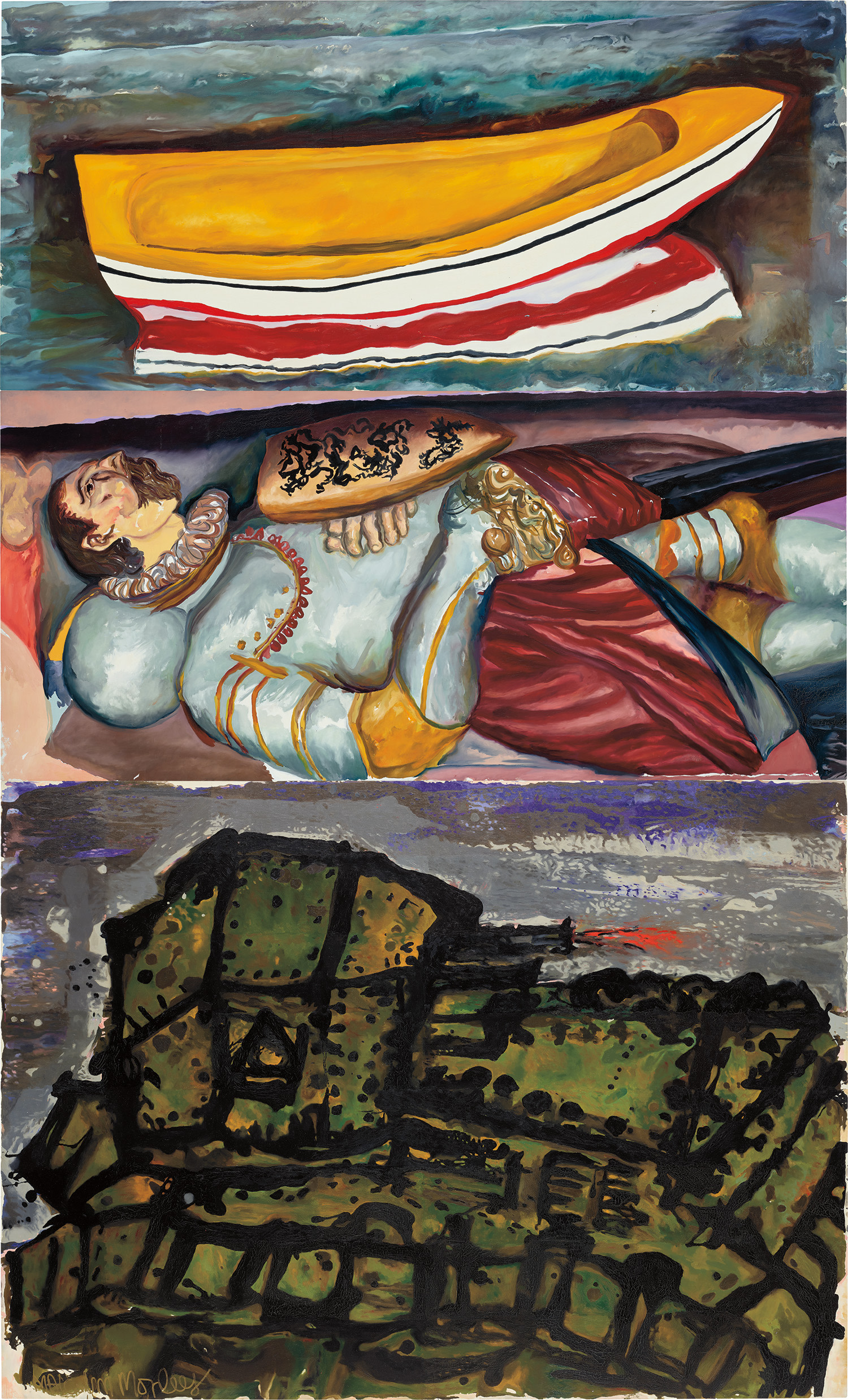

112
Malcolm Morley
The Boat, The Knight, The Tank
signed 'Malcolm Morley' lower left of the lower part; further signed and dated 'MAlcolm Morley 1990' on the reverse of the lower part
oil on linen, triptych
upper and centre part 91.7 x 198.5 cm (36 1/8 x 78 1/8 in.)
lower part 145.2 x 198.5 cm (57 1/8 x 78 1/8 in.)
overall 328.6 x 198.5 cm (129 3/8 x 78 1/8 in.)
lower part 145.2 x 198.5 cm (57 1/8 x 78 1/8 in.)
overall 328.6 x 198.5 cm (129 3/8 x 78 1/8 in.)
Painted in 1990.